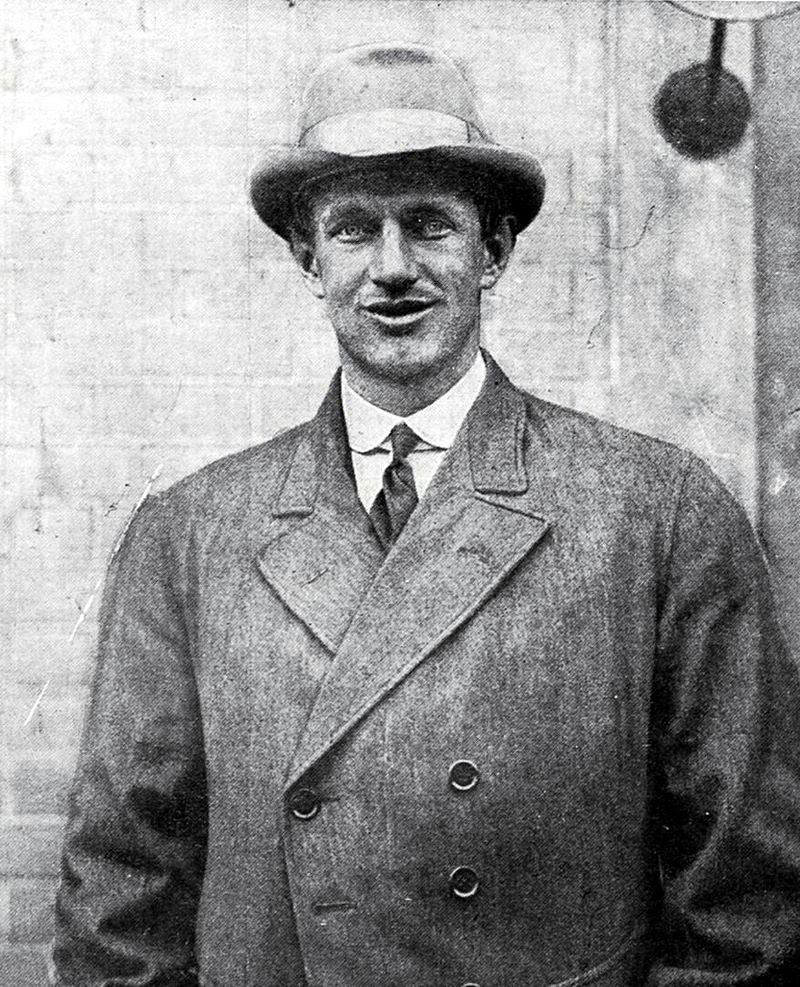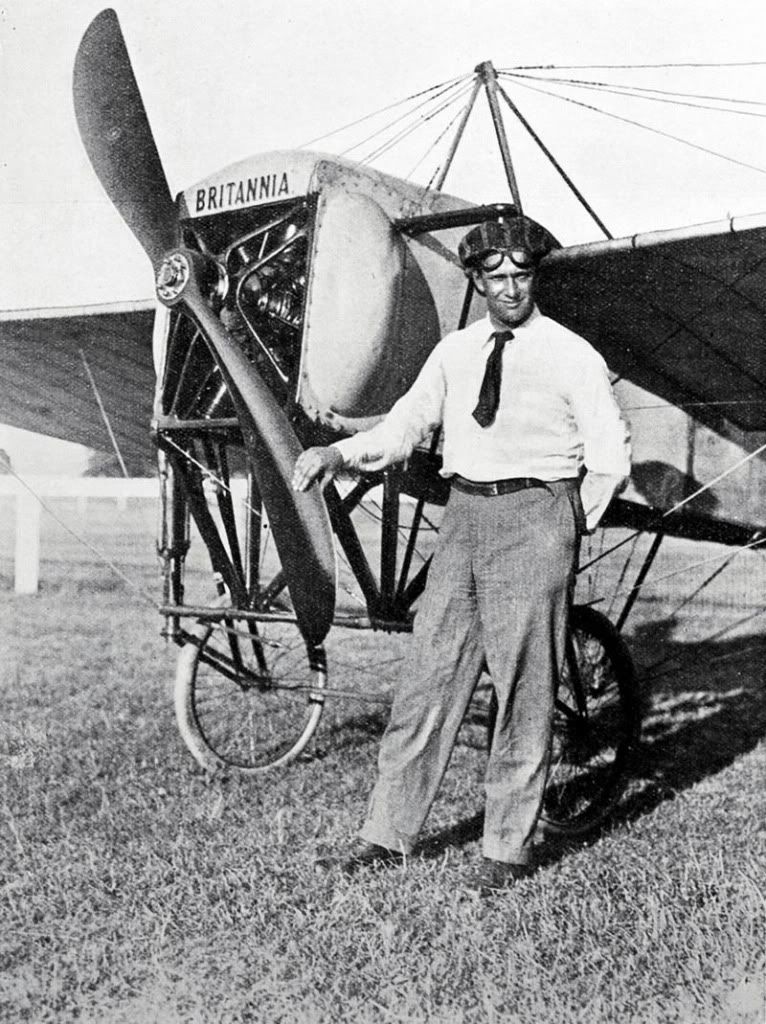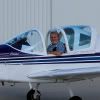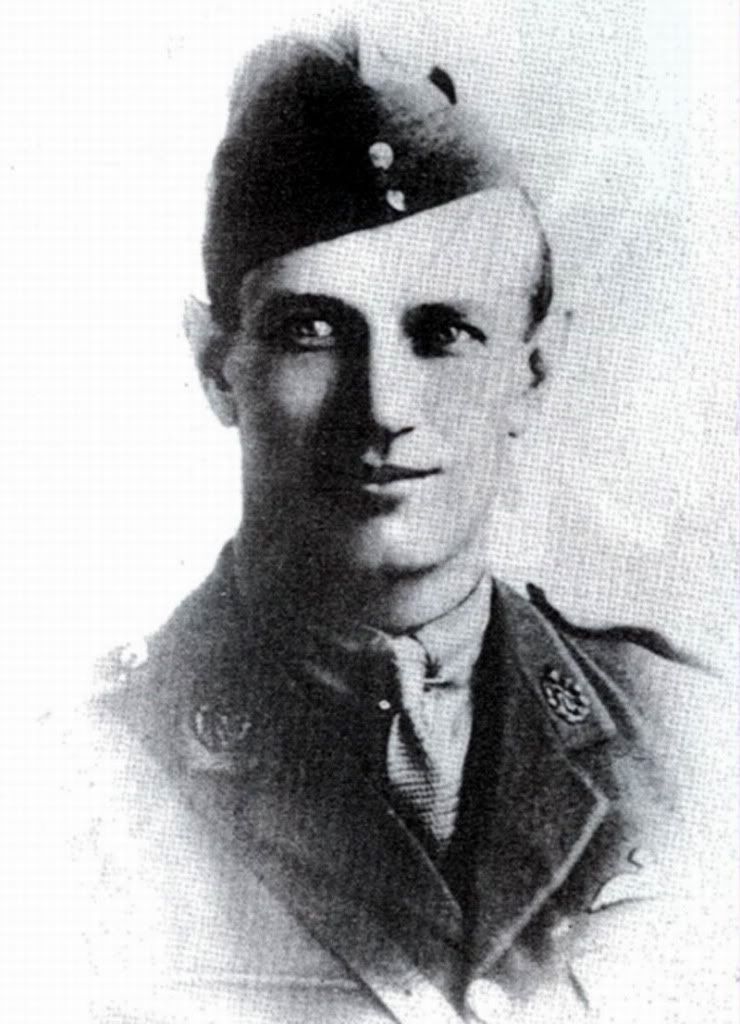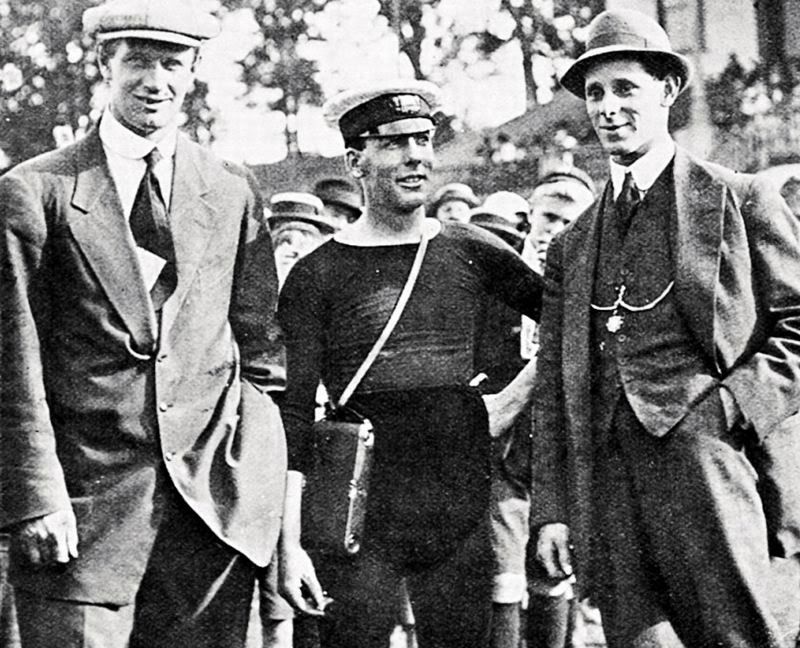Post by atillathenunns on Feb 9, 2012 22:09:09 GMT 12
militarianz.freeforums.org/new-zealands-pioneering-military-airmen-and-aircraft-t1219.html
Joseph Joel Hammond
Joseph Joel Hammond was born in Gonville, Wanganui, New Zealand. His flying career began some time in 1909, by the time he received his Aviators Certificate from the newly formed Royal Aero Club General Committee (one of the first to be issued), he was already an experienced aviator, test pilot and instructor.
“At the first meeting of the Royal Aero Club General Committee, on the 4th October 1910 (held at 166, Piccadilly, London), the request of the Aero Club de France to grant an Aviators Certificate to Joseph Joel Hammond of New Zealand was discussed and then sanctioned.”
The following month, 26th November, Hammond received his Royal Aero Club Aviators Certificate (No. 32).
Joseph “Joe” Hammond is not only New Zealands first military pilot he is also one of New Zealands and Australia’s pioneering aviators. His many aviation accomplishments and firsts, such as carrying the first male (Mr M. H. Ballie) and female (His wife Ethelwynd Hammond) passengers in Australia, would inspire a world wide audience. (Mrs Harvey Pattersonn was the second woman passenger)
The following two pictures are of Ethelwynd Hammond taking that first flight as a passenger.
Joe Hammond worked for the Bristol and Colonial Aircraft company as an instructor, and after arriving in Australia in December 13th, 1910 he demonstrated the Bristol Boxkite around Australia. The Boxkite was an improved version of the early Henri Farman biplane. The cost was £1,000 plus around £50 freight from Britain with about £300 tax duty.
The following are extracts from a British flight magazine printed on March 16, 1912, written by Mr G. W. Whatmore of Melbourne.
“The succession of successful flights made by Mr Hammond in the chief cities of the Commonwealth became the sole topic of conversation at the time of their taking place. In reality they were the first and only successful flights witnessed in Australia.”
“On one occasion (3rd May 1911) while transporting a military officer, Captain Niechy from Ascot racecourse in Sydney to the Military encampment at Liverpool, a distance of 25 miles, landing in the presence of the Governor General, Lord Dudley and the Officer Commanding, Brigadier General J. M. Gordon, on which occasion Mr Hammond received an ovation.”
The following picture is of Lt Colonel Antill (seated behind Hammond) who was taken by Hammond on an observation flight of the Liverpool encampment on the 3rd May 1911. (The second photograph is usually described as being taken on the 5th May at Ascot racecourse in Sydney, but it would most likely have been taken in April or possibly the 3rd May)
Hammond returned to England on the 5th May 1911.
26th February 1913
Royal Flying Corps Military Wing (special reserve of Officers)
The undermentioned to be Second Lieutenants. (On probation).
Joseph Joel Hammond, Gordon Noel Humphreys, Norman Channing Spratt, Denys Charles Ware.
31st December 1913
“Decidedly interesting developments in local aviation are promised in the near future- Mr. J. J. Hammond has been known for some time past to have been working hard to induce the Government to allow him to fly the "Britannia" monoplane, which has been lying in the shed at the Buckle street Barracks since the end of September last.
Apparently Mr. Hammond has nearly succeeded, for the machine, now equipped with a propeller, was yesterday shipped to Auckland where it will be on view at the Exhibition. Should General Godley give his consent on his arrival at Auckland next Sunday, Mr. Hammond will give public flights at the military tournament. The idea is excellent, and one can see no sound reason why permission should not be granted. Mr. Hammond has a fine record as a flier, and he holds a commission as lieutenant in the Royal Flying Corps, so that his application is entitled to every consideration. He is the only real airman in New Zealand today, certainly the only man who is fit to be trusted with so powerful a machine as the 80-h.p. Gnome-Bleriot. The Britannia was made to be flown, not to lie idle, and disuse is the worst possible abuse for aeroplanes.
The Australian Commonwealth Government's Doperdussins are said to be practically useless now, after being stored up to over a year, not to mention the fact that they are out of date as compared with more modern machines. The Britannia is an aeroplane of absolutely the first class, both in power, design, material, and equipment. It would be a pity to let it rot away. Mr. Hammond has a reputation for careful handling of aeroplanes, and in all his long experience he is said never to have smashed a single machine, and he has flown scores. The Defence authorities would be well advised to seize the opportunity and let Mr. Hammond give the Britannia a run. In such weather as we have been enjoying during the past few days the Auckland to Wellington flight via Rotorua, Taupo, Napier, and the Wairarapa would be perfectly feasible. The Britannia is easily the best machine that has ever been in Australasia, and people want to see it fly. There are also signs of progress among the private individuals who have taken an interest in aviation during the last few years, and have constructed and engined aeroplanes.”
17th January 1914
“Lieut. Hammond is to be congratulated on getting a flight out of the Government monoplane "Britannia" so soon. His spectacular soaring over Auckland City was entirely unexpected, as he was not supposed to fly officially until the 29th January. However, like a sensible pilot, he took advantage of the weather that waits for no man, and got in a good flight within the time. He flew for a quarter of an hour on Saturday afternoon and again for an hour on Sunday morning. There appears to have been no mishap whatever, though the airman stated afterwards that the planes were not answering properly to the controls. This is according to the Herald report. Presumably, it means that the wings were not warping properly. I understand that Mr. Hammond saw to the adjustment of the warping cables himself, but it is only flight that reveals defects like that mentioned satisfactorily. No doubt more perfect adjustments will now be made. It seems however, somewhat extraordinary, if the Herald report is correct, that Hammond should have tried standing the plane on its wing-tips — banking up to 90 degrees. It may be, however, that the fact that the warping was inefficient actually caused this steep banking, as the tendency is in the direction of increasing the bank unless it is corrected by warping. The "Britannia" is a very fine machine, and its Gnome engine one of the best, and no doubt Lieut. Hammond will before the season is over give some of the long distance flights of which both he and the plane are quite capable.”
19th January 1914
“While a trial flight of the aeroplane Britannia was being attempted last evening by Lieutenant Hammond, an incident occurred which, shows that the dangers of flying are not at all confined to the air. Hammond had consented to take a passenger up with him for the first time. He tested the aeroplane, which appeared to be working satisfactorily. The engine was set going, and when the men who were holding the machine released her she shot forward and ran some distance along the ground. Hammond was about to let her fly, when he found that one of the wires controlling the rudder was twisted. He probably could have rectified this in the air, but he decided not to take the machine up, and cut off the engine. The impetus that the machine had gained, however, was carrying the aeroplane near a fence. Hammond jumped from his seat and jammed the skid hard on the ground. The friction of the skid pulled up the aeroplane within a few yards of the fence. The idea of flying for the evening was then abandoned.”
Lieutenant Hammond made a small number of test flights from Epsom Showgrounds in Auckland before being ready to take a passenger aloft. But rather than selecting one of the dignitaries present to become his first passenger, Hammond chose instead Miss Esme McLennan of the Royal Pantomime Company. This caused embarrassment to the officials and Hammond found his services were no longer wanted.
20th January 1914
“It is understood that after the Britannia aeroplane has fulfilled its engagements at the Auckland Exhibition it will be brought to Christchurch and housed in King Edward Barracks. There will then be flights from Hagley Park, and it is likely that a School of Aviation will ultimately be formed in Christchurch, with Lieutenant Hammond in charge.”
4th February 1914
“Further flights of the monoplane Britannia in Auckland are improbable. Colonel Logan, officer commanding the Auckland district, stated that the contract between Lieutenant J. J. Hammond (who has been flying the machine) and the Defence Department terminated on 12th January, since when Mr. Hammond has been in the employ of the Exhibition Executive. Colonel Logan added that as the Exhibition Executive had cancelled the contract for the flights of the monoplane, it had reverted to the control of the Defence Department. The aeroplane would either be packed away in its case and sent to Wellington or placed in tho Defence Department's court at the Exhibition. General Godley will probably be in Auckland tomorrow, and the disposition of the machine will be referred to him.”
The aircraft remained on static display for the remainder of the Exhibition and was returned to Wellington at the end of April 1914.
25th August 1914
It is understood that some difficulty has arisen in regard to the offer by Mr. J. W. H. Scotland, the young New Zealand aviator, to place his service and his aeroplane at the disposal of the Expeditionary Force. This he said to be due to the fact that no mention of aeroplanes and airmen was made in the instructions of the Imperial Government's accompanying its acceptance of New Zealand's offer of assistance. In answer to a question, the Hon. J. Allen said that the Britannia aeroplane given by the Standard of Empire, and flown by the late Gustav Hamel from Dover to Cologne and later in New Zealand, round Auckland, by Mr. J. J. Hammond, would not be sent Home with the Expeditionary Force. "They have plenty there," he said, "without us sending any. Besides, it may come in more useful for the protection of New Zealand. Aviators for New Zealand are now being trained in England.
29th January 1915
RFC Military Wing, London Gazette, Appointments.
Flying Officer, second Lieutenant J. J. Hammond, special reserve, dated January 29, 1915.
5th March 1915
RFC Military Wing, London Gazette, Appointments.
Second Lieutenant J. J. Hammond, on probation, is confirmed in his rank.
24th April 1915
RFC Military Wing, London Gazette, Appointments.
Second Lieutenant J. J. Hammond is appointed Lieutenant
13th January 1916
RFC Military Wing, London Gazette, Appointments.
Flying Officer – Appointment of Lieutenant J. J. Hammond, special reserve in Gazette, March 12, 1915 is now antedated to November 26, 1914.
13th June 1916
RFC Military Wing, London Gazette, Appointments.
Flight-Commander - Lieutenant J. J. Hammond, special reserve, from a flying officer, and to be temporary Captain whilst so employed.
22nd September 1918
Capt. Joseph Hammond was killed on September 22, 1918. At the time he was with the British Air Mission to the United States and was returning to Indianapolis from the Fourth Liberty Loan War Bond Drive air display at Greenfield. At about 5.30pm his Bristol Fighter F2B entered a right hand spin from 600 feet, its left wing striking a tree before crashing in a cornfield of the Marion County Poor Farm near its boundary with the Indianapolis Speedway. One of the passengers, civilian J L Kinder, was killed on impact, while the other, Lt R W Pickett of the US Army Air Service, was seriously injured but recovered.
At the funeral, Hammonds coffin was draped with an American and British Flag and was attended by US and British soldiers, including a firing squad of American and British aviation officers. Thousands of citizens attended the ceremony, at which the Bishop of Indianapolis officiated.
Hammond was cremated and his remains were then stored in the family mausoleum of Carl Fisher who was the founder of the Indianapolis speedway. Carl Fisher had graciously temporarily donated his own plot in the mausoleum until Hammonds family could come and claim the remains after the war. Hammond’s remains were never collected.
Hammonds remains still reside in Carl Fisher’s mausoleum #(L.42.S.13), Crown Hill cemetery, Indianapolis.
At the time of his death Joseph Hammond was the longest serving New Zealand pilot in the British services. He was thirty-one years old.
Joseph Joel Hammond
Joseph Joel Hammond was born in Gonville, Wanganui, New Zealand. His flying career began some time in 1909, by the time he received his Aviators Certificate from the newly formed Royal Aero Club General Committee (one of the first to be issued), he was already an experienced aviator, test pilot and instructor.
“At the first meeting of the Royal Aero Club General Committee, on the 4th October 1910 (held at 166, Piccadilly, London), the request of the Aero Club de France to grant an Aviators Certificate to Joseph Joel Hammond of New Zealand was discussed and then sanctioned.”
The following month, 26th November, Hammond received his Royal Aero Club Aviators Certificate (No. 32).
Joseph “Joe” Hammond is not only New Zealands first military pilot he is also one of New Zealands and Australia’s pioneering aviators. His many aviation accomplishments and firsts, such as carrying the first male (Mr M. H. Ballie) and female (His wife Ethelwynd Hammond) passengers in Australia, would inspire a world wide audience. (Mrs Harvey Pattersonn was the second woman passenger)
The following two pictures are of Ethelwynd Hammond taking that first flight as a passenger.
Joe Hammond worked for the Bristol and Colonial Aircraft company as an instructor, and after arriving in Australia in December 13th, 1910 he demonstrated the Bristol Boxkite around Australia. The Boxkite was an improved version of the early Henri Farman biplane. The cost was £1,000 plus around £50 freight from Britain with about £300 tax duty.
The following are extracts from a British flight magazine printed on March 16, 1912, written by Mr G. W. Whatmore of Melbourne.
“The succession of successful flights made by Mr Hammond in the chief cities of the Commonwealth became the sole topic of conversation at the time of their taking place. In reality they were the first and only successful flights witnessed in Australia.”
“On one occasion (3rd May 1911) while transporting a military officer, Captain Niechy from Ascot racecourse in Sydney to the Military encampment at Liverpool, a distance of 25 miles, landing in the presence of the Governor General, Lord Dudley and the Officer Commanding, Brigadier General J. M. Gordon, on which occasion Mr Hammond received an ovation.”
The following picture is of Lt Colonel Antill (seated behind Hammond) who was taken by Hammond on an observation flight of the Liverpool encampment on the 3rd May 1911. (The second photograph is usually described as being taken on the 5th May at Ascot racecourse in Sydney, but it would most likely have been taken in April or possibly the 3rd May)
Hammond returned to England on the 5th May 1911.
26th February 1913
Royal Flying Corps Military Wing (special reserve of Officers)
The undermentioned to be Second Lieutenants. (On probation).
Joseph Joel Hammond, Gordon Noel Humphreys, Norman Channing Spratt, Denys Charles Ware.
31st December 1913
“Decidedly interesting developments in local aviation are promised in the near future- Mr. J. J. Hammond has been known for some time past to have been working hard to induce the Government to allow him to fly the "Britannia" monoplane, which has been lying in the shed at the Buckle street Barracks since the end of September last.
Apparently Mr. Hammond has nearly succeeded, for the machine, now equipped with a propeller, was yesterday shipped to Auckland where it will be on view at the Exhibition. Should General Godley give his consent on his arrival at Auckland next Sunday, Mr. Hammond will give public flights at the military tournament. The idea is excellent, and one can see no sound reason why permission should not be granted. Mr. Hammond has a fine record as a flier, and he holds a commission as lieutenant in the Royal Flying Corps, so that his application is entitled to every consideration. He is the only real airman in New Zealand today, certainly the only man who is fit to be trusted with so powerful a machine as the 80-h.p. Gnome-Bleriot. The Britannia was made to be flown, not to lie idle, and disuse is the worst possible abuse for aeroplanes.
The Australian Commonwealth Government's Doperdussins are said to be practically useless now, after being stored up to over a year, not to mention the fact that they are out of date as compared with more modern machines. The Britannia is an aeroplane of absolutely the first class, both in power, design, material, and equipment. It would be a pity to let it rot away. Mr. Hammond has a reputation for careful handling of aeroplanes, and in all his long experience he is said never to have smashed a single machine, and he has flown scores. The Defence authorities would be well advised to seize the opportunity and let Mr. Hammond give the Britannia a run. In such weather as we have been enjoying during the past few days the Auckland to Wellington flight via Rotorua, Taupo, Napier, and the Wairarapa would be perfectly feasible. The Britannia is easily the best machine that has ever been in Australasia, and people want to see it fly. There are also signs of progress among the private individuals who have taken an interest in aviation during the last few years, and have constructed and engined aeroplanes.”
17th January 1914
“Lieut. Hammond is to be congratulated on getting a flight out of the Government monoplane "Britannia" so soon. His spectacular soaring over Auckland City was entirely unexpected, as he was not supposed to fly officially until the 29th January. However, like a sensible pilot, he took advantage of the weather that waits for no man, and got in a good flight within the time. He flew for a quarter of an hour on Saturday afternoon and again for an hour on Sunday morning. There appears to have been no mishap whatever, though the airman stated afterwards that the planes were not answering properly to the controls. This is according to the Herald report. Presumably, it means that the wings were not warping properly. I understand that Mr. Hammond saw to the adjustment of the warping cables himself, but it is only flight that reveals defects like that mentioned satisfactorily. No doubt more perfect adjustments will now be made. It seems however, somewhat extraordinary, if the Herald report is correct, that Hammond should have tried standing the plane on its wing-tips — banking up to 90 degrees. It may be, however, that the fact that the warping was inefficient actually caused this steep banking, as the tendency is in the direction of increasing the bank unless it is corrected by warping. The "Britannia" is a very fine machine, and its Gnome engine one of the best, and no doubt Lieut. Hammond will before the season is over give some of the long distance flights of which both he and the plane are quite capable.”
19th January 1914
“While a trial flight of the aeroplane Britannia was being attempted last evening by Lieutenant Hammond, an incident occurred which, shows that the dangers of flying are not at all confined to the air. Hammond had consented to take a passenger up with him for the first time. He tested the aeroplane, which appeared to be working satisfactorily. The engine was set going, and when the men who were holding the machine released her she shot forward and ran some distance along the ground. Hammond was about to let her fly, when he found that one of the wires controlling the rudder was twisted. He probably could have rectified this in the air, but he decided not to take the machine up, and cut off the engine. The impetus that the machine had gained, however, was carrying the aeroplane near a fence. Hammond jumped from his seat and jammed the skid hard on the ground. The friction of the skid pulled up the aeroplane within a few yards of the fence. The idea of flying for the evening was then abandoned.”
Lieutenant Hammond made a small number of test flights from Epsom Showgrounds in Auckland before being ready to take a passenger aloft. But rather than selecting one of the dignitaries present to become his first passenger, Hammond chose instead Miss Esme McLennan of the Royal Pantomime Company. This caused embarrassment to the officials and Hammond found his services were no longer wanted.
20th January 1914
“It is understood that after the Britannia aeroplane has fulfilled its engagements at the Auckland Exhibition it will be brought to Christchurch and housed in King Edward Barracks. There will then be flights from Hagley Park, and it is likely that a School of Aviation will ultimately be formed in Christchurch, with Lieutenant Hammond in charge.”
4th February 1914
“Further flights of the monoplane Britannia in Auckland are improbable. Colonel Logan, officer commanding the Auckland district, stated that the contract between Lieutenant J. J. Hammond (who has been flying the machine) and the Defence Department terminated on 12th January, since when Mr. Hammond has been in the employ of the Exhibition Executive. Colonel Logan added that as the Exhibition Executive had cancelled the contract for the flights of the monoplane, it had reverted to the control of the Defence Department. The aeroplane would either be packed away in its case and sent to Wellington or placed in tho Defence Department's court at the Exhibition. General Godley will probably be in Auckland tomorrow, and the disposition of the machine will be referred to him.”
The aircraft remained on static display for the remainder of the Exhibition and was returned to Wellington at the end of April 1914.
25th August 1914
It is understood that some difficulty has arisen in regard to the offer by Mr. J. W. H. Scotland, the young New Zealand aviator, to place his service and his aeroplane at the disposal of the Expeditionary Force. This he said to be due to the fact that no mention of aeroplanes and airmen was made in the instructions of the Imperial Government's accompanying its acceptance of New Zealand's offer of assistance. In answer to a question, the Hon. J. Allen said that the Britannia aeroplane given by the Standard of Empire, and flown by the late Gustav Hamel from Dover to Cologne and later in New Zealand, round Auckland, by Mr. J. J. Hammond, would not be sent Home with the Expeditionary Force. "They have plenty there," he said, "without us sending any. Besides, it may come in more useful for the protection of New Zealand. Aviators for New Zealand are now being trained in England.
29th January 1915
RFC Military Wing, London Gazette, Appointments.
Flying Officer, second Lieutenant J. J. Hammond, special reserve, dated January 29, 1915.
5th March 1915
RFC Military Wing, London Gazette, Appointments.
Second Lieutenant J. J. Hammond, on probation, is confirmed in his rank.
24th April 1915
RFC Military Wing, London Gazette, Appointments.
Second Lieutenant J. J. Hammond is appointed Lieutenant
13th January 1916
RFC Military Wing, London Gazette, Appointments.
Flying Officer – Appointment of Lieutenant J. J. Hammond, special reserve in Gazette, March 12, 1915 is now antedated to November 26, 1914.
13th June 1916
RFC Military Wing, London Gazette, Appointments.
Flight-Commander - Lieutenant J. J. Hammond, special reserve, from a flying officer, and to be temporary Captain whilst so employed.
22nd September 1918
Capt. Joseph Hammond was killed on September 22, 1918. At the time he was with the British Air Mission to the United States and was returning to Indianapolis from the Fourth Liberty Loan War Bond Drive air display at Greenfield. At about 5.30pm his Bristol Fighter F2B entered a right hand spin from 600 feet, its left wing striking a tree before crashing in a cornfield of the Marion County Poor Farm near its boundary with the Indianapolis Speedway. One of the passengers, civilian J L Kinder, was killed on impact, while the other, Lt R W Pickett of the US Army Air Service, was seriously injured but recovered.
At the funeral, Hammonds coffin was draped with an American and British Flag and was attended by US and British soldiers, including a firing squad of American and British aviation officers. Thousands of citizens attended the ceremony, at which the Bishop of Indianapolis officiated.
Hammond was cremated and his remains were then stored in the family mausoleum of Carl Fisher who was the founder of the Indianapolis speedway. Carl Fisher had graciously temporarily donated his own plot in the mausoleum until Hammonds family could come and claim the remains after the war. Hammond’s remains were never collected.
Hammonds remains still reside in Carl Fisher’s mausoleum #(L.42.S.13), Crown Hill cemetery, Indianapolis.
At the time of his death Joseph Hammond was the longest serving New Zealand pilot in the British services. He was thirty-one years old.


